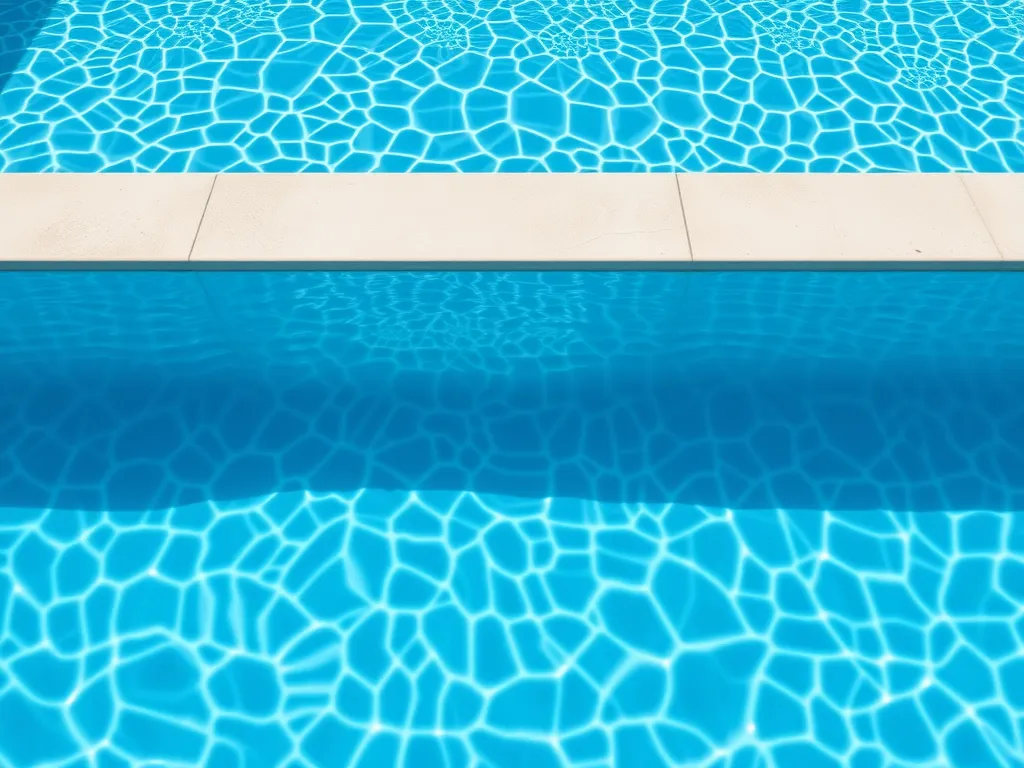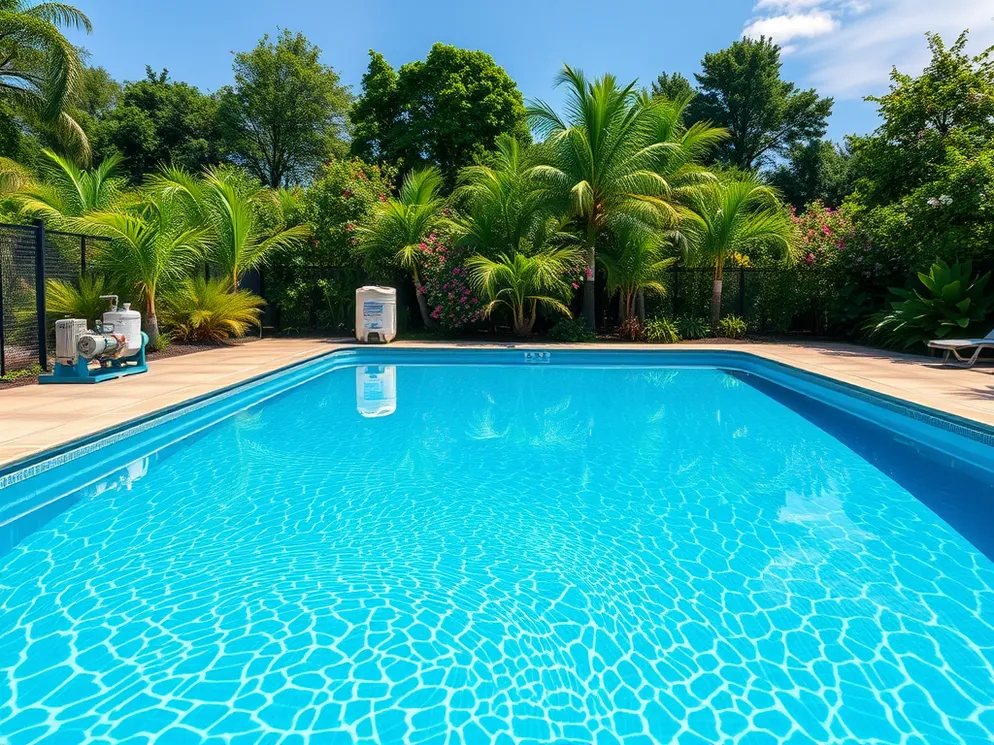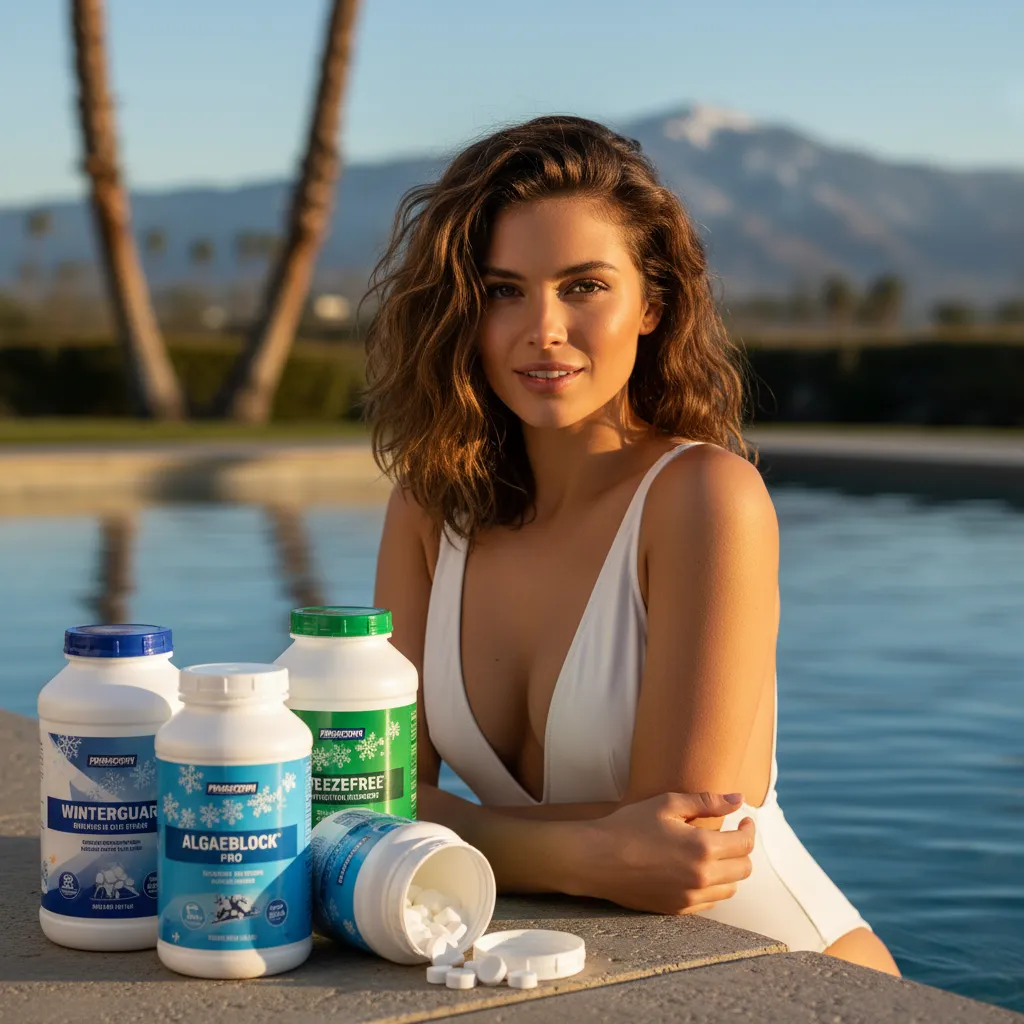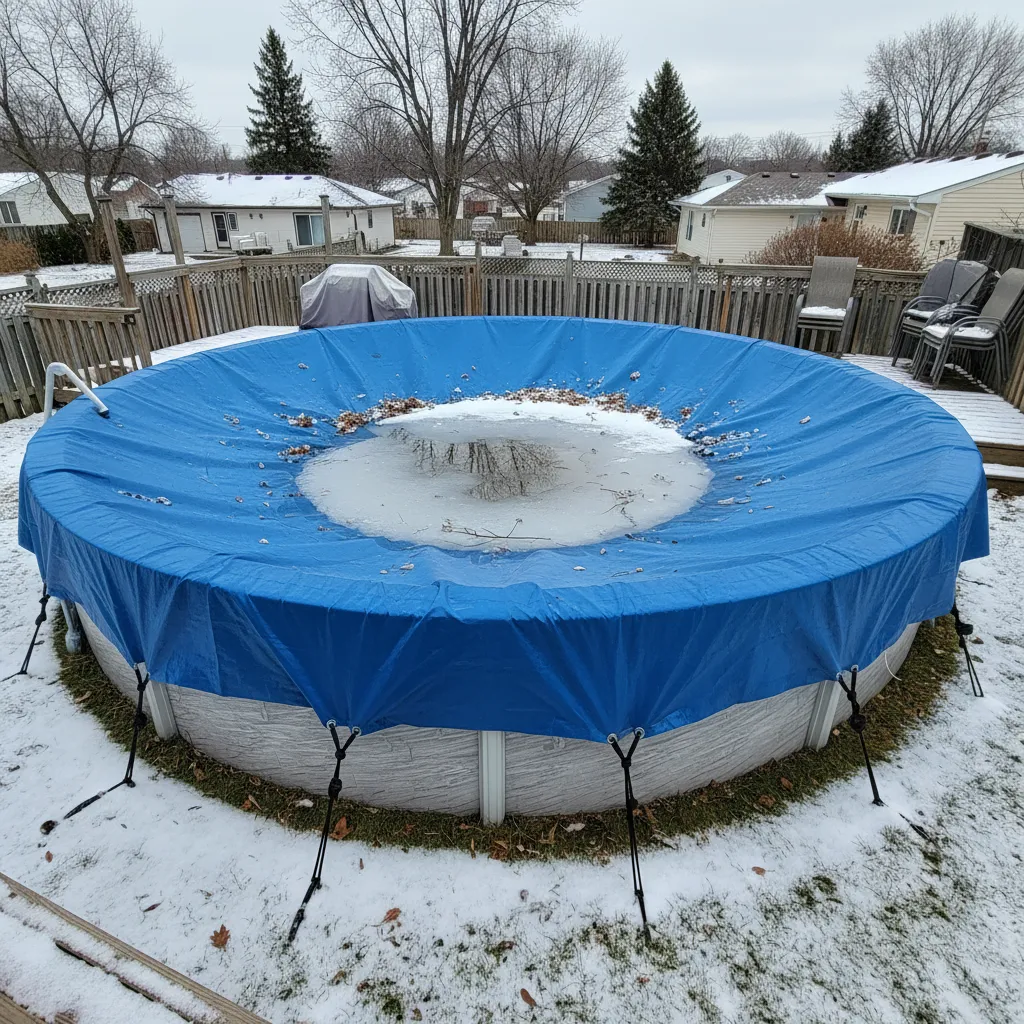Sodium Thiosulfate Pool Calculator
Published on: April 9, 2025 | Last Updated: April 13, 2025
Written By: Marcus Thornfield
Need to lower chlorine levels in your pool? Sodium thiosulfate helps neutralize excess chlorine. Use this calculator to find the right amount for your pool. Just enter your pool size and chlorine levels. We’ll do the math for you!
Chlorine Neutralizer Calculator
Based on 0.006 ounces per gallon for each 1 ppm chlorine reduction. Results rounded to nearest whole number for safety.
How to Use
- Test your pool water chlorine level
- Measure your pool’s total water volume
- Enter numbers above (in gallons and ppm)
- Add calculated amount to return jet area
Always add chemicals gradually. Wait 2 hours between treatments. Retest before swimming.
Crucial Winterizing Products
"The all-in-one solution for a guaranteed clear spring opening."
All-in-One Closing Chemical Kit
Winter demand is high - check stock
"The 'set & forget' option. This is the easiest winterizing I've ever done."
Simple 3-in-1 Winterizing Balls
Winter demand is high - check stock
"Invest once to protect your liner and prevent a swamp in the spring."
Heavy-Duty Winter Pool Cover
Winter demand is high - check stock
Factors Influencing Sodium Thiosulfate Dosage in Pool Care
Sodium thiosulfate is a chlorine-neutralizing agent used to reduce sanitizer levels in swimming pools. Its effectiveness depends on multiple variables. Accurate dosing requires analyzing these factors to avoid under- or over-treatment. Similarly, managing the pH levels in pools is important for water balance. Sodium bisulfate is often used to lower pH in pools, helping to keep the water safe and comfortable for swimmers.
Current Chlorine Concentration
Free chlorine levels (measured in ppm) directly determine sodium thiosulfate requirements. Each 1 ppm reduction in a 10,000-gallon pool typically requires 2.8 ounces of sodium thiosulfate pentahydrate. Higher concentrations demand proportional increases. For example: With proper calculations, balancing chemicals in your pool becomes easier. A sodium hypochlorite pool calculator can help you find the right dosage for maintaining safe and clean water.
| Chlorine Reduction Target | Dosage per 10,000 Gallons |
|---|---|
| 1 ppm | 2.8 oz |
| 3 ppm | 8.4 oz |
| 5 ppm | 14 oz |
Test water with a DPD test kit or digital sensor before treatment. Total chlorine levels above 5 ppm may require staged treatments to prevent overshooting.
Pool Volume and Water Temperature
Larger pools need more sodium thiosulfate. A 20,000-gallon pool requires double the dosage of a 10,000-gallon pool for the same chlorine reduction. Warmer water (above 85°F) accelerates chemical reactions, potentially shortening the neutralization timeline by 15-20%. Pools with high chlorine levels may need careful monitoring. It’s important to use the right amount of neutralizer to ensure safe swimming conditions.
Presence Of Stabilizers and Other Chemicals
Cyanuric acid (CYA) levels above 50 ppm can slow chlorine neutralization. Bromine-based systems may require 10-15% higher sodium thiosulfate doses due to molecular binding differences. Always check for algaecides or oxidizers that might interact with the treatment.
Application Methods for Sodium Thiosulfate
Proper application ensures even distribution and prevents localized over-treatment. Two primary methods are used by professionals.
Pre-dissolving Techniques
- Mix 1 pound of sodium thiosulfate with 5 gallons of warm water (80-90°F)
- Stir until fully dissolved (3-5 minutes)
- Pour solution slowly around pool edges with circulation pumps running
This method prevents undissolved crystals from settling on pool surfaces.
Direct Addition to Skimmer Systems
For smaller doses under 8 ounces:
- Turn off automatic chlorinators
- Place measured crystals in skimmer basket
- Run filtration system for 4-6 hours
Monitor filter pressure, as temporary clogging may occur during dissolution.
Also See: Oval Pool Gallon Calculator – Find Your Pool’s Capacity

Safety and Storage Protocols
While sodium thiosulfate is generally safe, improper handling can cause issues.
Protective Measures During Handling
- Wear nitrile gloves and safety goggles
- Avoid inhaling dust particles
- Rinse spills immediately with water
Optimal Storage Conditions
| Factor | Requirement |
|---|---|
| Temperature | 50-77°F |
| Humidity | <60% RH |
| Shelf Life | 24 months unopened |
Store in original airtight containers away from acids or oxidizers. Discard clumped material, as moisture exposure reduces potency.
Troubleshooting Common Treatment Issues
Overdose Correction
Excess sodium thiosulfate lowers chlorine beyond safe levels (<0.5 ppm). To correct:
- Add 1 lb calcium hypochlorite per 10,000 gallons
- Retest after 4 hours
- Repeat until 1-3 ppm chlorine achieved
Unexpected Cloudiness
Hazy water after treatment often indicates:
- Calcium carbonate precipitation (pH >7.8 during treatment)
- Undissolved thiosulfate crystals
Adjust pH to 7.2-7.6 and run filter continuously until clear.
Comparative Analysis: Sodium Thiosulfate Vs Alternatives
Hydrogen Peroxide (H2O2)
- Cost: $12-$15 per gallon (27% solution)
- Dosage: 1 quart per 10,000 gallons per 1 ppm reduction
- Reaction Time: 15-30 minutes
UV Treatment Systems
- Initial Cost: $1,200-$2,500
- Ongoing: $150/year bulb replacement
- Effectiveness: Reduces chlorine demand by 30-50%
Advanced Application Scenarios
Commercial Pool Treatment
For pools over 50,000 gallons:
- Use bulk 50-lb sodium thiosulfate containers
- Install automated dosing pumps with flow sensors
- Maintain 0.5-1.0 ppm residual during swimmer entry
Post-shock Treatment
After superchlorination (10+ ppm):
- Wait until chlorine drops below 8 ppm
- Add 70% of calculated sodium thiosulfate dose
- Retest after 2 hours before adding remainder

FAQs: Sodium Thiosulfate in Pool Maintenance
Does Sodium Thiosulfate Affect Ph Levels?
Minimal impact when used correctly. A 5 ppm chlorine neutralization in 10,000 gallons may raise pH by 0.1-0.2 units. Adjust with muriatic acid if needed.
Can It Be Used in Saltwater Pools?
Yes, but test salinity first. Concentrations above 3,500 ppm may require 5-7% higher doses due to ionic interference.
How Long Until Swimming Resumes?
Wait 30 minutes after complete circulation. Confirm chlorine levels are 1-3 ppm and pH is 7.2-7.8.
Optimizing Seasonal Use
Warmer months often require more frequent treatments due to higher bather loads. In winter:
- Reduce doses by 20% for temperatures below 50°F
- Extend circulation time to 8-12 hours
For precise calculations tailored to your pool’s specifications, visit My Pool Calculator. Our tools account for all variables discussed, ensuring accurate sodium thiosulfate dosing recommendations.
Regulatory Compliance and Environmental Impact
The EPA allows sodium thiosulfate use in public pools under NSF/ANSI Standard 50. Maximum residual limits:
| Jurisdiction | Allowable Concentration |
|---|---|
| EPA | <5 ppm |
| California Title 22 | <3 ppm |
Excess thiosulfate breaks down into sulfate ions, which are generally non-toxic below 250 ppm.
Cost Analysis: Sodium Thiosulfate Treatments
Typical annual costs for residential pools:
- 5,000-gallon pool: $15-$25
- 20,000-gallon pool: $60-$90
- 50,000-gallon commercial pool: $200-$300
Bulk purchasing (25-lb containers) reduces costs by 15-20% compared to retail packaging.
Long-term Pool Health Considerations
Monthly sodium thiosulfate treatments exceeding 10 ppm chlorine reduction may:
- Increase TDS (Total Dissolved Solids) by 50-75 ppm annually
- Require more frequent filter cleaning
Conduct quarterly TDS tests and drain/refill when levels exceed 1,500 ppm.
For specialized scenarios or complex water chemistry questions, My Pool Calculator provides customized solutions based on real-time water test data and environmental conditions.





